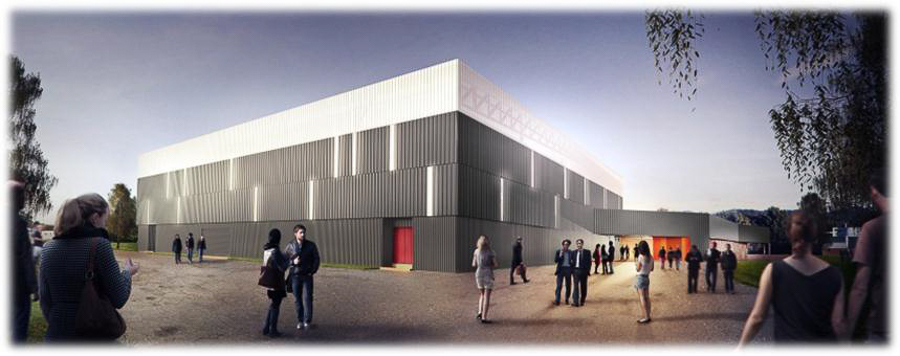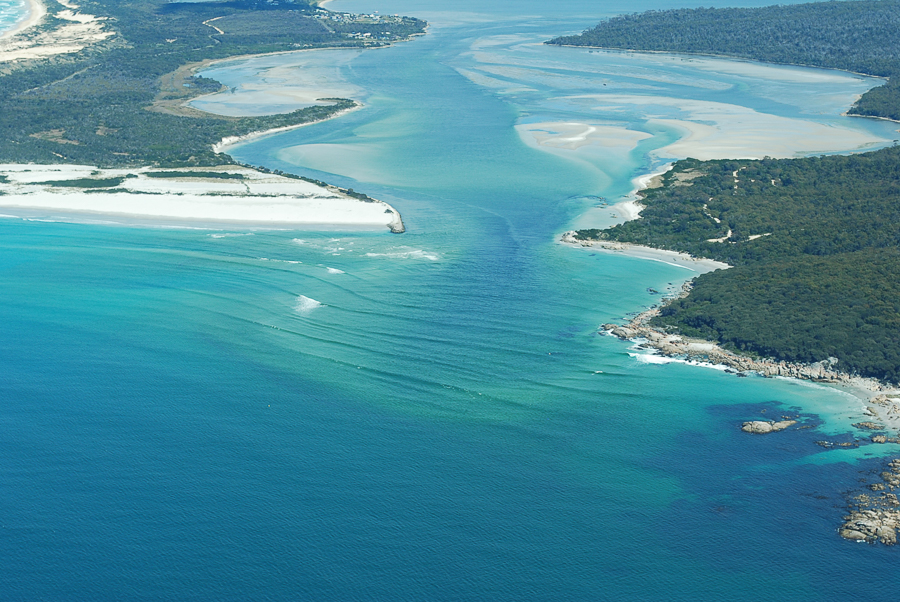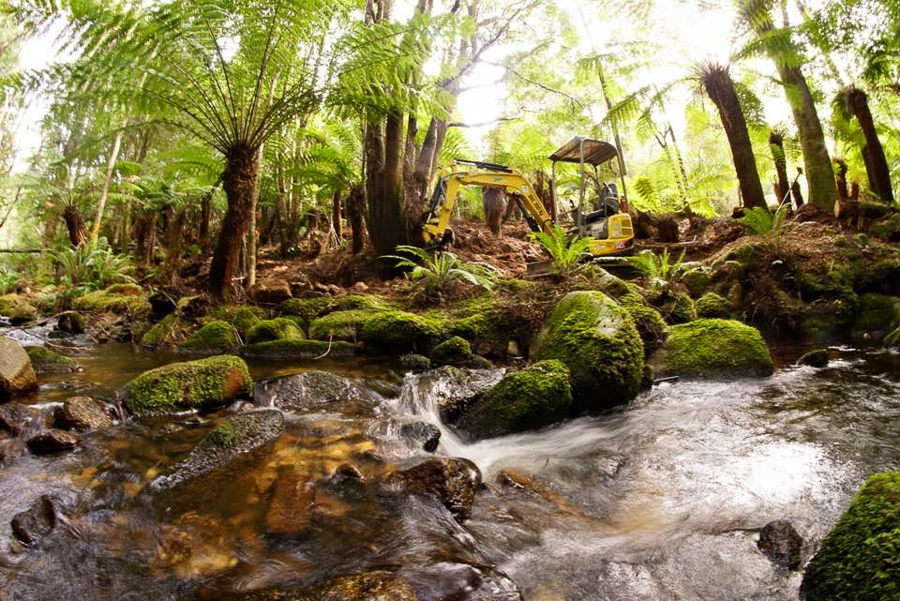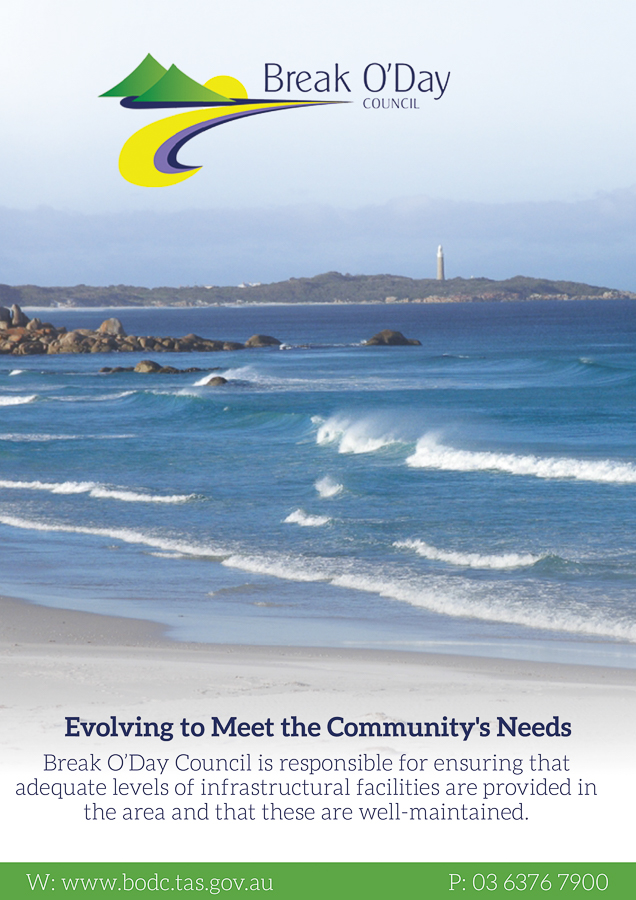Break O’Day Council is one of the largest local government areas in Tasmania, covering an area of 3,809 square kilometres on the state’s pristine East Coast. The region has a number of prominent coastal towns including St Helens, Scamander, Falmouth, Four Mile Creek, Beaumaris, Stieglitz, Seymour, Ansons Bay and Binalong Bay.
The area is famous for the stunning Bay of Fires Conservation Area, the Mount William National Park and is considered Tasmanian’s Game Fishing Capital. The region’s permanent population is about 6,500 which grows over the summer months to more than 13,000, revealing its popularity as a holiday destination.
There are a number of inland towns as well, with the most prominent being St Marys, Fingal, Mathinna, Mangana, Cornwall, Pyengana, Goshen and Weldborough. All popular destinations due to the access they grant to forest areas like St Columba Falls, the Blue Tier and parts of the Douglas Apsley National Park.
Break O’Day Council is responsible for ensuring that adequate levels of infrastructural facilities are provided in the area and that these are well-maintained. In this effort, Mayor Mick Tucker plays a pivotal role and his guidance and leadership have served to provide the region’s residents with excellent facilities and a host of new projects.
Council ensures that each of the activities it undertakes help achieve its goal of utilising its resources in the best possible manner. Towards this end, Council has identified five key result areas that it monitors assiduously. These areas are community building, environment and planning, leadership and governance, economic development and asset management.
Residents of the region are engaged in tourism-related activities, agriculture, aquaculture, fishing, forestry and mining. Council has been successful in providing the right inputs and support to promote each of these activities within its area.
Some of the important projects that Council is currently engaged in or has completed are:
Multi-purpose Stadium
This project has made excellent progress and is a state-of-the-art reimagining of the St Helens Sport and Recreation Ground. The new facility includes a surface suitable for international level games. The stadium has already been approved under the National Facilities Policy for Netball – Australian Government Sports Commission Version 01: July 2015.
Additionally, an endorsement was received from Netball Australia and Netball Tasmania for Intra-State games. The stadium’s design incorporates several innovative features including indoor viewing facilities for outdoor courts.

Break O’Day Council’s General Manager, John Brown says, “It is a new building which also incorporates the refurbishment of an existing building. In terms of the stadium from a sporting perspective, it is being built to an excellent standard and we have incorporated a number of green aspects into the building.
“Apart from using LED lighting that is fully programmable and dimmable; the lighting system will have a huge range of functionality. Another aspect is the upper part of the stadium, which is translucent and it lets in a lot of natural light. This will lead to a substantial saving on energy costs especially as we have coupled this with the use of LEDs.
“We have received Federal and state government funding to the value of $750,000 and so far Council has spent about $1,250,000 from its cash reserves. We have developed a business plan and we are prepared to run the facility at a loss for about five years before we anticipate the project to become profitable.”
The stadium can function as an evacuation centre or a convention centre and has stepped seating, ideal for community events. In fact, it is expected that the stadium will play a key role in the Break O’Day community and the multi-purpose focus was essential to maximise the future use of this strategic facility.
Speaking about Council’s motivation for this project, Mayor Mick Tucker said, “High-quality community recreation and sporting facilities can offer direct benefits to a region’s economy and were a key consideration of councillors when considering this project.”
Bridge replacement
Council has an ambitious on-going project to build concrete bridges in replacement of aging, existing timber structures. It has already converted 14 such bridges in eight districts at a cost exceeding $3 million. The project envisages six more timber bridges will be replaced this year. The ultimate 10-year plan is to substitute concrete structures in place of all the existing bridges. This plan will be completed in alignment with the availability of external funding and existing revenue streams.
St Helens Barway
The barway coming in to Georges Bay at St Helens is notoriously difficult to navigate. The build-up of sand has resulted in a situation where at high tide there is only clearance of 1.2 metres. Council has recognised that unless immediate action is taken, access to the harbour will continue to be difficult.
The treacherous navigation of the barway poses a real threat to human life. In December 2014, a man died in a boating incident when his vessel got caught in rough conditions when attempting to navigate the St Helens barway near Burns Bay.
The fishing vessels based in St Helens also face restricted access to the harbour because of the build-up of sand in the navigation channel at Pelican Point. Council has been working with Marine and Safety Tasmania (MAST) and has arrived at a solution to this intractable problem that has been plaguing St Helens harbour for many years.

The Council with input from MAST determined the best way to make the harbour safe is to extend the existing retaining wall and build a groin at Pelican Point which will actively divert water through the channel and thereby mitigating sand build-up. Agitation work within the channel would also be required to remove some of the existing sand build-up. When this work is carried out, the viability of the fishing and tourism industries would be increased due to the easier and safer navigation of the barway into the St Helens Harbour. .
The $2.3 million project will be financed jointly by MAST, the state government and Council. MAST have already earmarked $850,000, the state government has added $1.3 million in its last budget with Council putting up the remaining $200,000.
Mountain bike trail
Break O’Day Council teamed up with Dorset Council to promote Stage 1 of the Blue Derby Mountain Bike (MTB) project which received Federal Government funding of $2.5 million. Now, the Break O’Day Council (in conjunction with Dorset Council) is actively seeking $3.1 million in funding for the development of Stage 2. Planning approval for the Blue Tier component of the project was received by Council in April 2015 which facilitated the extensive approval process for environmental and heritage issues. Already the MTB project has boosted the region’s tourism sector and contributed to increased employment and economic growth.

The first stage of the project involved the construction of 80 kilometres of trails in the north-east corner of Tasmania. The second stage will see approximately an additional 100km of trails. When completed, this three trail network will be world class, purpose built single-track mountain bike trails with associated infrastructure, including signage, and ancillary facilities such as bike wash stations. The features are both constructed and natural and there are a number of rivers and waterfalls that make these trails some of the best in the country.
In addition to the involvement of the local government bodies, a number of Tasmanian government and non-government institutions have been involved in the project.
These include Parks and Wildlife, Northern Tasmania Development, Tourism Northern Tasmania, East Coast Regional Tourism Organisation, Tourism Tasmania, Forestry Tasmania, Natural Resource Management and Sport and Recreation Tasmania. It is to Council’s immense credit that it has successfully co-ordinated with a large number of bodies to bring this project to fruition.
Health precinct
With an ageing facility due for upgrading, Council decided to take the proactive step of securing land for a health precinct in St Helens which supports the state government to build a new District Hospital. The current facility has a range of problems from flooding to poor access so Council purchased a 3.4 ha plot in St Helens that ticked all the boxes for suitability, access and future planning initiatives including the possible inclusion of a residential aged care facility.
The State Government has already committed $7 million of the required $12 million in funding for investigations, planning and design of the facility with the remainder to be used for the construction. The project is scheduled to start in 2016.
Conclusion
Reviewing the year’s operations, Mayor Mick Tucker reported that Council’s plans are on target with many projects already completed and others currently under implementation. The bridge infrastructure replacement plan is progressing well with a large number of bridges already renewed and others scheduled for upgradation. St Helens’ stormwater upgrade has been completed successfully.
Stage 2 of the new Multi-Purpose Indoor Stadium is nearing completion. Work on the St Helens barway project should start soon and the St Helens Hospital Precinct master plan is also progressing well. The residents of the area are fortunate to have a council that is able to meet their needs and plan for their future requirements as well.
AT A GLANCE
WHO: Break O’Day Council
WHAT: Break O’Day Council is responsible for ensuring that adequate levels of infrastructural facilities are provided in the area and that these are well-maintained.
WHERE: TAS 7216
WEBSITE: http://www.bodc.tas.gov.au/
Sponsored Advertorials
- AJL Consulting Engineers
- Bison Constructions





 This information will never be shared to third parties
This information will never be shared to third parties